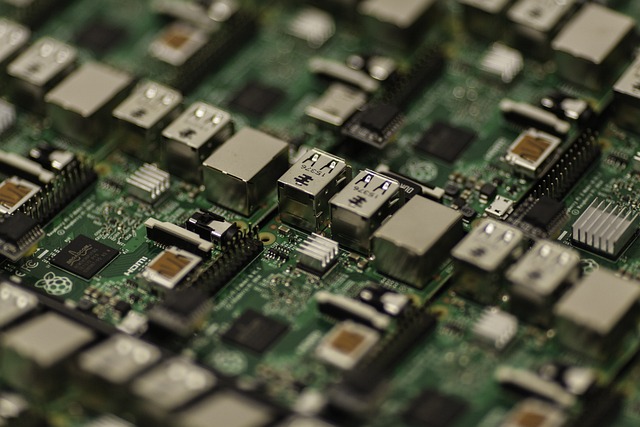“Unlock the power of raspberry pi – Learn the basics and create your first project today!”
Take the first step to becoming a Raspberry Pi expert! Sign up for our Raspberry Pi Course for Beginners – Step-by-Step to your first Raspberry Pi Project and start building your own projects today!
Introduction
Welcome to the raspberry pi course for beginners – Step-by-Step to your first raspberry pi project! This course is designed to help you get started with the raspberry pi, a low-cost, credit-card sized computer that can be used for a variety of projects. We will cover the basics of the raspberry pi, including setting up the hardware, installing the operating system, and connecting to the internet. We will also discuss some of the most popular projects that can be done with the raspberry pi, such as creating a media center, building a robot, and more. By the end of this course, you will have the knowledge and skills to create your own raspberry pi projects. So let’s get started!
What You Need to Know Before Starting a Raspberry Pi Course for Beginners
If you’re thinking about starting a raspberry pi course for beginners, you’ve come to the right place! raspberry pi is a great way to get into coding and electronics, and it’s a great way to get your students excited about technology. But before you dive in, there are a few things you should know.
First, you’ll need to decide what type of raspberry pi course you want to offer. Do you want to focus on coding, or do you want to teach a more general introduction to raspberry pi? Depending on your students’ needs, you may want to offer a combination of both.
Next, you’ll need to decide what type of hardware and software you’ll need. raspberry pi is a great platform for beginners, but you’ll need to make sure you have the right components and software to get your students up and running.
Finally, you’ll need to decide how you’ll teach the course. Will you use lectures, hands-on activities, or a combination of both? You’ll also need to decide how you’ll assess your students’ progress.
Starting a raspberry pi course for beginners can be a great way to get your students excited about technology. Just make sure you’re prepared with the right hardware, software, and teaching methods before you dive in. Good luck!
Step-by-Step Guide to Your First Raspberry Pi Project
Are you ready to take the plunge and start your first raspberry pi project? If so, you’ve come to the right place! This step-by-step guide will walk you through the process of setting up your raspberry pi and getting started on your first project.
Step 1: Gather Your Supplies
Before you can get started, you’ll need to make sure you have all the necessary supplies. You’ll need a raspberry pi board, a power supply, an SD card, a monitor, a keyboard, and a mouse. You may also want to pick up a case to protect your raspberry pi.
Step 2: Set Up Your raspberry pi
Once you have all your supplies, it’s time to set up your raspberry pi. Start by inserting the SD card into the raspberry pi board. Then, connect the power supply, monitor, keyboard, and mouse. Finally, turn on the power and boot up your raspberry pi.
Step 3: Install the Operating System
Now that your raspberry pi is set up, you’ll need to install an operating system. The most popular operating system for raspberry pi is Raspbian. You can download the latest version of Raspbian from the raspberry pi website. Once you’ve downloaded the image, you can use a program like Etcher to write the image to your SD card.
Step 4: Configure Your raspberry pi
Once you’ve installed the operating system, you’ll need to configure your raspberry pi. This includes setting up a username and password, connecting to a Wi-Fi network, and configuring the time zone. You can find detailed instructions for configuring your raspberry pi on the raspberry pi website.
Step 5: Start Your project
Now that your raspberry pi is set up and configured, it’s time to start your project! Depending on what type of project you’re working on, you may need to install additional software or libraries. You can find detailed instructions for installing software on the raspberry pi website.
Once you’ve installed the necessary software, you can start coding your project. If you’re new to programming, you may want to start with a simple project like a basic game or a web server.
Step 6: Enjoy Your project
Once you’ve finished coding your project, it’s time to enjoy the fruits of your labor! You can show off your project to friends and family, or even share it with the world.
Congratulations! You’ve just completed your first raspberry pi project. With a little bit of patience and perseverance, you can create amazing projects with your raspberry pi. So what are you waiting for? Get started on your next project today!
Exploring the Benefits of a Raspberry Pi Course for Beginners

Are you interested in learning how to use a raspberry pi? If so, you’re in luck! A raspberry pi course for beginners is the perfect way to get started.
raspberry pi is a small, affordable computer that can be used for a variety of projects. It’s a great way to learn about coding, electronics, and robotics. Plus, it’s a lot of fun!
A raspberry pi course for beginners is the perfect way to get started. You’ll learn the basics of how to set up and use a raspberry pi, as well as how to write code and create projects. You’ll also get to explore the many possibilities of the raspberry pi, from creating a media center to building a robot.
The best part about a raspberry pi course for beginners is that it’s designed to be accessible to everyone. You don’t need to have any prior experience with coding or electronics. The course will teach you everything you need to know, from the basics to more advanced concepts.
Plus, a raspberry pi course for beginners is a great way to get hands-on experience. You’ll get to work with the raspberry pi and create projects that you can show off to your friends and family.
So, if you’re interested in learning how to use a raspberry pi, a raspberry pi course for beginners is the perfect way to get started. You’ll learn the basics, get hands-on experience, and explore the many possibilities of the raspberry pi. Plus, it’s a lot of fun!
Tips for Troubleshooting Common Raspberry Pi Issues
If you’re a raspberry pi enthusiast, you know that the tiny computer can be a bit temperamental at times. But don’t worry – with a few simple troubleshooting tips, you can get your raspberry pi back up and running in no time. Here are some of the most common raspberry pi issues and how to fix them.
1. No Display
If your raspberry pi isn’t displaying anything on the screen, the first thing to check is the power supply. Make sure the power supply is plugged in and providing enough power to the raspberry pi. If that doesn’t work, try connecting the raspberry pi to a different monitor or TV. If that still doesn’t work, try a different HDMI cable.
2. No Network Connection
If your raspberry pi isn’t connecting to the internet, the first thing to check is the network settings. Make sure the network settings are correct and that the raspberry pi is connected to the correct network. If that doesn’t work, try restarting the raspberry pi. If that still doesn’t work, try a different Ethernet cable.
3. Overheating
If your raspberry pi is overheating, the first thing to do is make sure it has adequate ventilation. Make sure the raspberry pi is not in an enclosed space and that there is plenty of airflow around it. If that doesn’t work, try using a fan to cool the raspberry pi.
4. Corrupted SD Card
If your raspberry pi isn’t booting up, the first thing to check is the SD card. Make sure the SD card is properly inserted and that it is not corrupted. If that doesn’t work, try reformatting the SD card.
5. Software Issues
If your raspberry pi isn’t working properly, the first thing to check is the software. Make sure the software is up to date and that all of the necessary packages are installed. If that doesn’t work, try reinstalling the software.
With these tips, you should be able to troubleshoot most common raspberry pi issues. If you’re still having trouble, don’t hesitate to reach out to the raspberry pi community for help. Good luck!
How to Choose the Right Raspberry Pi Course for Your Needs
Are you looking to learn more about raspberry pi? With so many raspberry pi courses available, it can be hard to know which one is right for you. Here are some tips to help you choose the best raspberry pi course for your needs.
1. Consider Your Level of Experience
If you’re a beginner, look for a course that covers the basics of raspberry pi. This should include topics such as setting up the raspberry pi, connecting it to the internet, and using the command line. If you’re more experienced, look for a course that covers more advanced topics such as programming, networking, and hardware interfacing.
2. Check the course Outline
Before signing up for a course, make sure to check out the course outline. This will give you an idea of what topics are covered and how in-depth the course is. If the course doesn’t cover the topics you’re interested in, it’s probably not the right one for you.
3. Look for Hands-On Learning
raspberry pi is a hands-on technology, so it’s important to find a course that offers plenty of hands-on learning opportunities. Look for courses that include practical exercises and projects that you can work on. This will help you get the most out of the course and gain real-world experience.
4. Read Reviews
Before signing up for a course, take some time to read reviews from other students. This will give you an idea of what to expect from the course and whether it’s worth the money.
By following these tips, you should be able to find the perfect raspberry pi course for your needs. Good luck!
Q&A
1. What is a raspberry pi?
A raspberry pi is a small, low-cost, single-board computer that can be used for a variety of projects. It is a great way to learn programming and electronics.
2. What do I need to get started with a raspberry pi?
You will need a raspberry pi board, a power supply, an SD card, a keyboard, a mouse, and a monitor. You may also need additional components such as a case, a WiFi adapter, and a USB hub.
3. What can I do with a raspberry pi?
You can use a raspberry pi to create a wide variety of projects, from a media center to a home automation system. You can also use it to learn programming and electronics.
4. What is included in the raspberry pi course for beginners?
The raspberry pi course for beginners includes step-by-step instructions on how to set up your raspberry pi, how to install the operating system, and how to create your first project. It also includes tutorials on programming and electronics.
5. How long does it take to complete the raspberry pi course for beginners?
The raspberry pi course for beginners can be completed in as little as one day, depending on your experience level. However, it is recommended that you take your time and go through the course at your own pace.
Conclusion
The raspberry pi course for beginners – Step-by-Step to your first raspberry pi project is an excellent way to get started with the raspberry pi. It provides a comprehensive overview of the raspberry pi, its components, and how to use them to create projects. With the help of this course, you can easily learn the basics of raspberry pi and create your own projects. With the help of this course, you can become a raspberry pi expert in no time.













